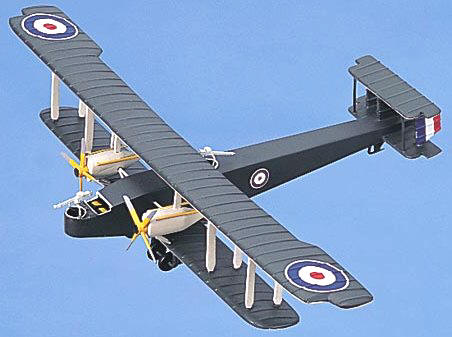|
|
|

|
Handley Page 0/400 |
|
World
War I saw the birth of strategic air power. Unlike tactical air
power that focused on the support of ground troops, strategic bombing
was aimed at the enemy's ability to wage war - it's factories, rail
yards, and communication centers.
This required planes that could carry many
bombs and enough fuel to get them to distant targets and back
again. The Germans began strategic bombing with lighter than air
Zeppelins, but they were ineffective. Soon all the combatants
built heavy bombers. Characteristic of these were two twin-engine
biplanes, the German Gotha G.IV and the British Handley Page
0/400. Both were designed to attack the other country's
capitol. Fully loaded, they weighed over 30,000
pounds.
The Handley-Page 0/400 came into service only a
few weeks before the war was over, so they were never used for their
intended mission. They were converted to in 1918, but too late for
use as a strategic bomber. They were first used by RAF
communication squadrons, but were soon converted to other use.
Some of them replaced the bomb bay with a passenger compartments.
Others were converted into transports. Subtypes included the 0/7, 0/10
and 0/11 freighters. They could carry between 10 and 14
passengers. |
|

|
Handley
Page 0/400
Premier Series. 1/50th scale. 18.35" wingspan x
11.75" long.
No. ACA3D-PR. Only $194.95 |
|
